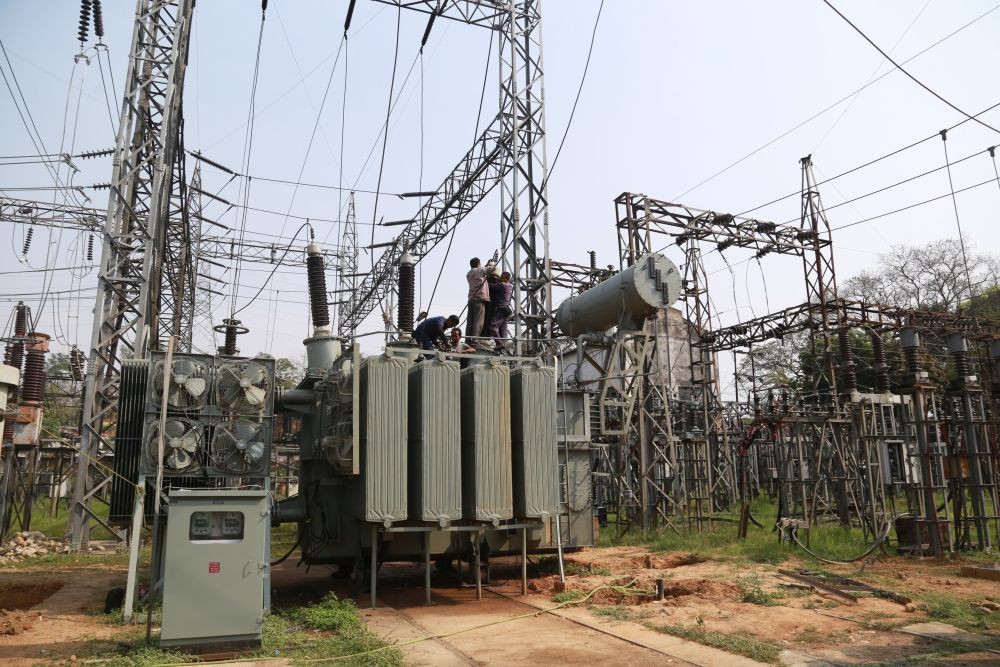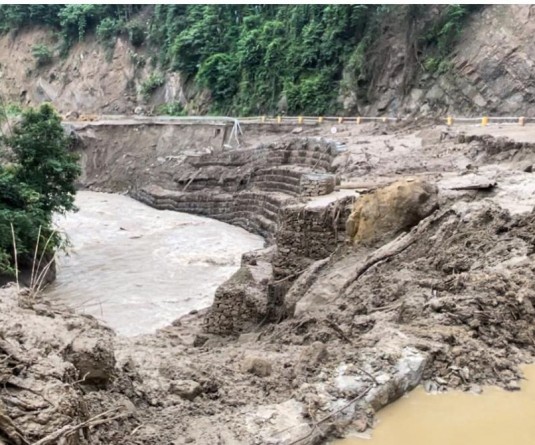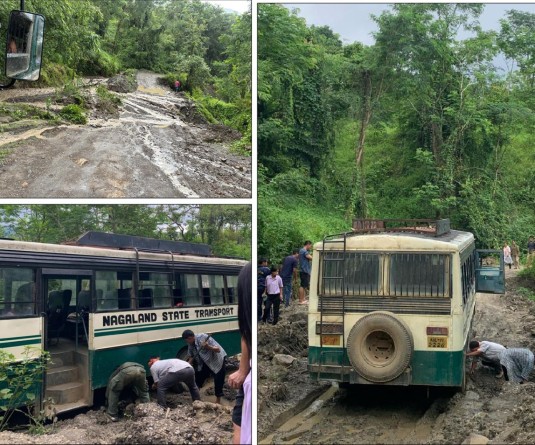Technicians are seen repairing one of the transformers at Nagarjan Power House in Dimapur. (Photo by Soreishim Mahong)

Morung Express News
Dimapur | February 24
Dimapur | February 24
People crave easy fixes: the one simple change that will erase a problem in a stroke. However, a solution requires numerous small steps, no slipups, no goof ups and everyone pitching in. The same may be applied, while considering factors to address Nagaland state’s power dilemma.
Round the clock maintenance personnel, sound distribution network along with steady generation and supply-demand ratio, and consumer responsibility are general requisites for healthy supply of power. All these put together would then result in a sound revenue base.
Nagaland’s peak demand at present is tipped at 110 megawatts (MW). At the current rate, a twofold increase is projected by the end of this decade.
Hypothetically, the existing distribution infrastructure in Nagaland at its three load centers located in Kohima, Mokokchung and Dimapur is capable of handling the current requirement. Dimapur load centre has an installed load capacity of 100 MVA (80 MW), Kohima 24 MVA (19.2 MW) and Mokokchung 25 MVA (20 MW), providing a statewide distribution capability of around 120 MW.
It looks easy enough in theory but the difficulty is in the supply. Nagaland seldom receives its requirement, the supply from the grid falling well short of the requirement, often going as low as 50 percent of the requirement.
Homegrown generation is limited with supply from the state-owned 24 MW Likimro Hydro-electric Project (LHEP) wholly dependent on the rains. There are, according to the Power department, six mini-hydro electric projects (1 MW and below), of which only two are operating. It brings the state’s generation capacity to around 27 MW, including LHEP.
Ageing and overloaded distribution paraphernalia at the local level is another hurdle in the way of uninterrupted power.
For instance, in Dimapur, though the distribution capability at its load centre may have doubled with the commissioning of the 100 MVA transformer at Nagarjan, its four main distribution sub-stations (Metha colony, Industrial Estate, Burma camp and 4th Mile) are ill-equipped to withstand the distribution load from the main sub-station. If at all the Dimapur load centre receives the estimated requirement of 60 MW for Dimapur area and its immediate periphery, its distribution sub-stations have a combined load capability of only around 50 MW. Simply put, a total revamp of the system, including all distribution equipments ranging from transformers, feeders to conductors connected to the sub-stations is essential.
Chief Engineer for Power, K Maichieo concedes that “a lot of system (distribution set up) improvement is required.” He further laments that fund constraints and the prevalent land-ownership system are two major barriers coming in the way of power self-sufficiency in Nagaland.
For the interim though, the power position has seen a slight improvement. Miachieo informed that the government allocated additional fund to buy power from the market, which has improved supply to a certain extent. At present, the Nagaland is buying a maximum of 30 MW during peak hours and 15 MW at off peak.
Upgrading and system improvement
Echoing the Chief Engineer’s views, other department officials state that upgrading the existing distribution set up is imperative. In addition, checking theft and increasing revenue collection is no less important, stated Additional Chief Engineer, Imlikumzuk Ao. The state’s energy demand graph has tilted upward at a phenomenal rate over the past decade, while the system and manpower has witnessed no significant change.
To balance the surge in demand, a project called ‘System Improvement Scheme’ is in the pipeline to perk up the distribution set up in Dimapur. It primarily seeks to replace and upgrade ageing equipments. The peak requirement in Dimapur proper is more than the demand from the rest of the districts combined. Peak supply at present for Dimapur area is 45-50 MW against a demand of 60 MW. Supply during off-peak is 30-35 MW.
At present, there is a proposal to upgrade the existing 10 MVA distribution transformers at 4th Mile and Industrial Estate sub-stations to 20 MVA, which will ease over-loading of equipments. Meanwhile, setting up of a 5 MVA sub-station at Super Market is underway.
On a statewide perspective, Chief Engineer, Miachieo disclosed that plans are afoot to upgrade the capability of Mokokchung and Kohima load centres. Mokokchung load centre will be upgraded to 50 MVA, after the re-commissioning of the 25 MVA transformer, which was lent to Dimapur load centre in 2012. Kohima load centre is expected to have a distribution load capacity of 48 MVA in two years time.
Another factor to consider is the rampant stealing of power. This is evident from the fact that in Dimapur, there are only forty five thousand registered power consumers. Executive Engineer, Dimapur Transmission Division, Moameren states that there is a need for awareness among consumers that energy is not a free commodity. “They need to be responsible and understand that the government too pays for power.” He however expresses optimism that despite hurdles, the Anti Power Theft Mobile Squad will eventually succeed in substantially curbing down power theft.
Despite the technical, political and even societal hurdles, the department expects to address the said factors through concerted efforts, a small part of which is the system upgradation work underway in Dimapur.





